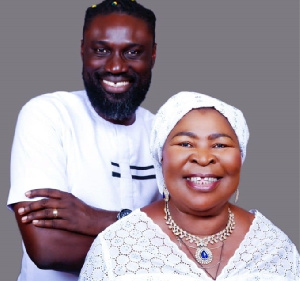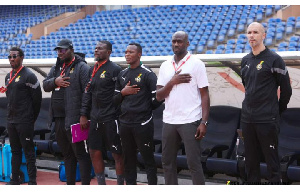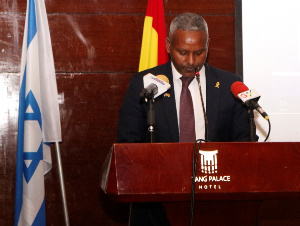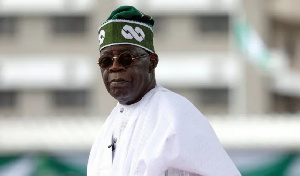Opinions of Tuesday, 14 July 2015
Columnist: Alhassan, Saaka
Bimbilla region has a history of ethnic violence
In the spring of 1994 in the market at Nakpayili, near the Togolese border in up-country Ghana, two men were engaged in a common, intense Ghanaian pastime bargaining. One outbid the other for a black guinea-fowl. Tempers flared into a brawl. Next day, the man outbid killed his rival, sparking a less common Ghanaian activity: tribal war.
The killer came from the Konkomba tribe; his victim was a Nanumba. Soon men from the two tribes began to attack each other's villages and set up roadblocks to trap their enemies. With-in days, four tribes; Nanumbas, Dagombas and Gonjas against Konkombas were fighting across much of the north. About 2,000 people were killed, and 150,000 lost their homes (High Beam Research http://www.highbeam.com/doc/1G1-15865400.html November 12, 1994).
Also, in the wee hours of Thursday, 10th July, 2015, i received a shocking call from Bimbilla, the District Capital of Nanumba North district in the Northern region that there was an intensive exchange of gunfire over meat. The cause of the clashes was however sketchy but I learnt the violence was reportedly triggered by the refusal of some butchers to pay royalties or tributes to the regent of the Nanung Traditional area. According to my source, the Regent demands that any time the butchers kill an animal they should bring a portion of the meat to his palace as royalties or tribute. Northern tradition and for that matter the tradition of the Nanumba people, chiefs are paid royalties or tributes in various forms including farm produce, meat and among others.
The Northern part of Ghana and for that matter northern region for some time now is noted for its petty squabble which always leads to loss of lives and property. Most of these violence acts are often described as unjustifiable considering what trigger them. But could that be the case? It was widely understood globally that the people of northern Ghana fought because of Guinea Fowl which we vehemently denied. Can we deny the recent Bimbilla violence where the regent demanded meat from butchers as royalties or tributes? Could it be that the people, Ghanaians and non-Ghanaians, do not understand the culture and tradition of the people in the northern region or the northern people are just violent prone?
The Kings of Mamprugu, Dagbon, Nanung and Gonja played a leading role in their Kingdoms pertaining the payment of royalties and tributes otherwise known as taxes before colonial and post colonial era. This served as an integrating factor in their respective domains. Individuals, headmen, village chiefs, sub-chiefs and divisional chiefs who visited their king were obliged to present a gift to the King. Another example is that in Mamprugu, the Tara-Naa was entitled to a portion of any gift the Nayiri received.
In the same vein, one could not go to one's father empty handed. In the pre-colonial era, Dagbon for instance had evolved a complicated tax system that nurtured Kingship. Before the coming of the Europeans, there existed a well defined system of royalties or tribute from the people to the local chiefs, from the local chiefs to the divisional chiefs and from the divisional chiefs to the King. At each stage of the transaction, a portion was retained. This practice was upheld in all the Mamprugu, Dagbon, Nanung and Gonja Kingdoms.
The payment of tributes to chiefs in Gonja was equally elaborate. Village headmen paid royalties or tributes to clan chiefs, these in turn paid royalties or tributes to the divisional chiefs, the divisional chiefs also paid the tribute to the Yagbon-Wura (the Overlord of Gonja Kingdom). For instance, the Kpembi-Wura had to pay royalties or tributes to the Yagbon-Wura on the occasion of any Gonja Nation festival.
In Gonja, any dead animal found in the bush belong to the village headman or chief. The Tusk of an elephant found dead was sent to the chief and the hunter kept the other portion. The meat of one of the hind legs of any big game killed by a hunter such as a Buffalo or elephant or antelope etc was given to the Gonja Chief. One of the Tusk and one of the ears of an elephant particularly the one lying on the ground together with the meat of one thigh of the animal was sent to the chief. The sending or offer of the Tusk and ear lying on the ground was significant. It is an acceptance of the fact that the land belongs to the chief. The ear of the elephant was used for covering the talking drums of the chief. The King was not to be given a hind leg of small animals killed; these went to small chiefs.
The complex structure of royalties or tributes paid in the Mamprug-Dagbon-Nanung and the Gonja Kingdoms was very significant or important to every chief or King in these Kingdoms since it signifies that he controls and owns the land. Royalties or tributes payment served as an integral force in the Kingdom. It also demonstrated the power entailed in the Kingship. By a mere violation to offer or pay royalties or tributes meant that his reign was not being recognized.
Saaka Alhassan
Journalist Fiila Fm, Tamale
Northern Region
0206502343
[email protected]
Entertainment










